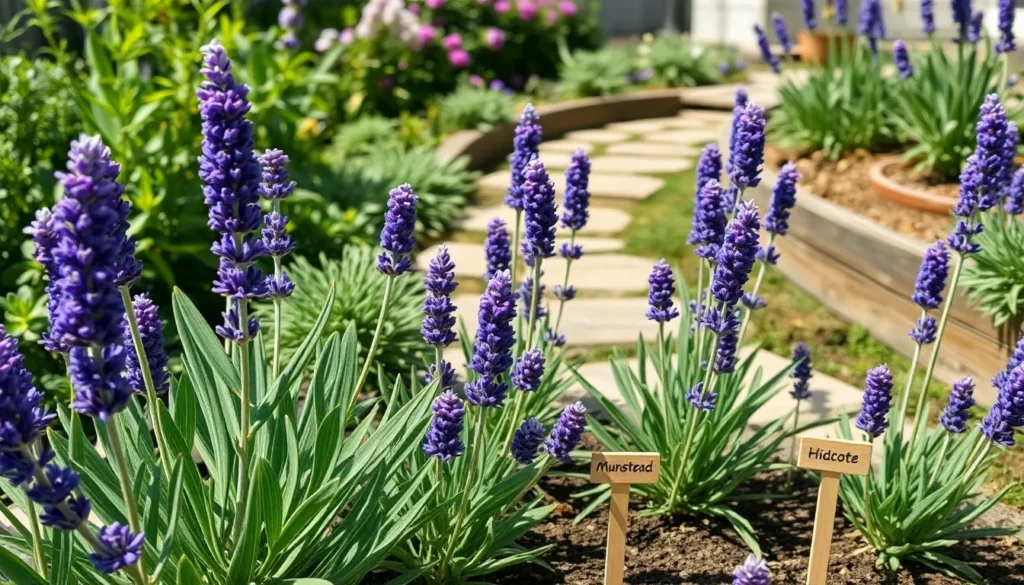Imagine stepping into your garden on a warm summer’s evening, the gentle breeze carrying the calming scent of lavender through the air. This enchanting experience is within reach, whether you’re a gardening novice or a seasoned horticulturist. Lavender, with its silvery foliage and striking purple blooms, offers more than just aesthetic allure—it invites tranquility and a touch of Mediterranean charm to any garden space.
For those just starting their gardening journey, lavender can serve as a delightful introduction to the joys of nurturing plants. It’s a hardy, forgiving plant that rewards even minimal effort with a flourish of color and fragrance. Meanwhile, experienced gardeners will find new challenges and rewards in cultivating different lavender varieties, experimenting with their placement, and perfecting soil conditions to coax the most vibrant growth.
In this guide, we’ll explore everything you need to know to successfully grow lavender in your garden, from selecting the right variety for your climate to mastering the art of pruning. You’ll learn how to create the ideal environment for your lavender plants to thrive, employing tips and tricks that will ensure their health and longevity. Embark on this lavender-growing journey with us, and soon enough, you’ll be enjoying both the visual and aromatic benefits of this beloved herb right in your own backyard.
Select a Sunny Location
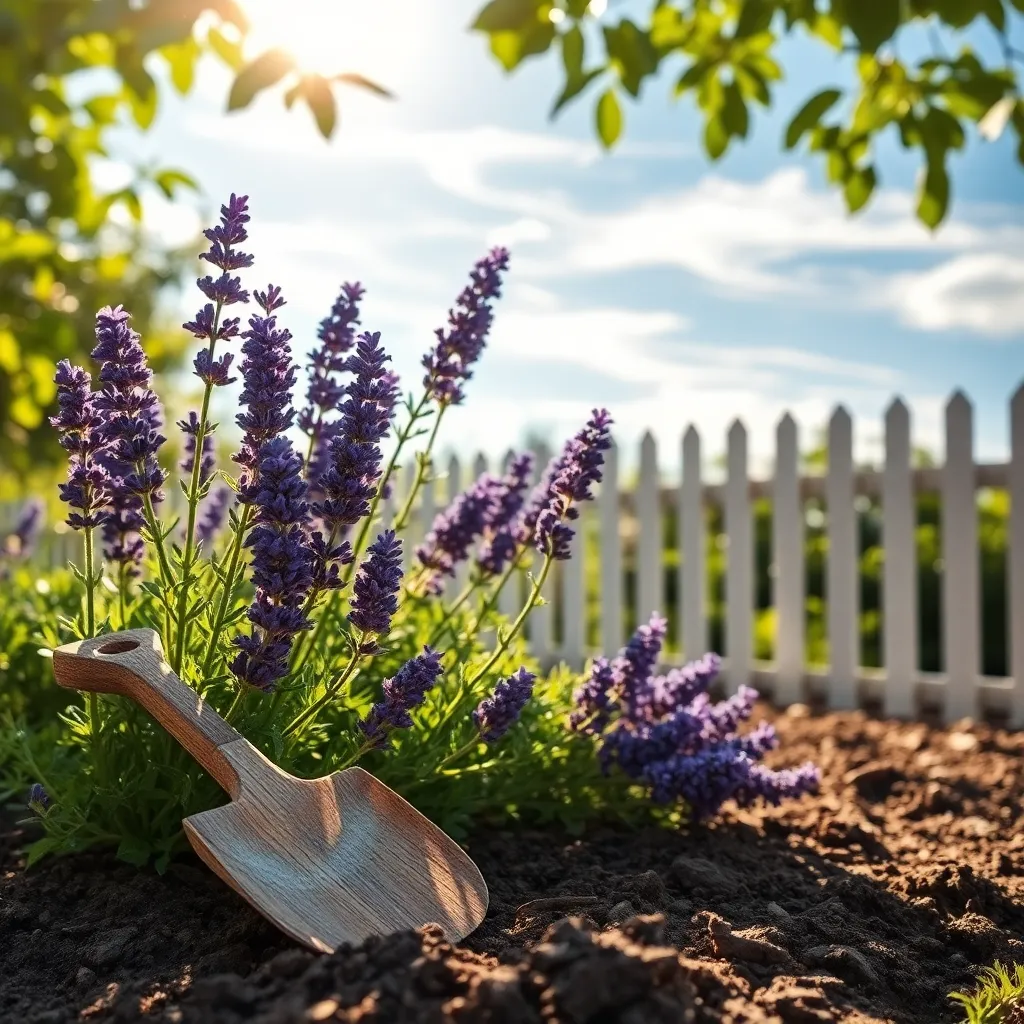
To grow lavender successfully, choosing a sunny location is crucial as lavender thrives in full sun. Aim for a spot that receives at least six to eight hours of direct sunlight each day to ensure robust growth.
Consider the soil conditions in your chosen location, as well-drained soil is essential for lavender. If your garden soil is heavy clay, amend it with sand or gravel to improve drainage and prevent root rot.
For those with limited space, lavender also grows well in containers placed in sunny areas like patios or decks. Use a potting mix specifically designed for Mediterranean plants and ensure the container has drainage holes to avoid waterlogged roots.
Advanced gardeners may explore companion planting by placing lavender near other sun-loving herbs like rosemary and thyme. This not only maximizes the use of sunny spaces but also creates a fragrant herb garden with complementary benefits.
Prepare Well-Draining Soil

To successfully grow lavender, you need to ensure the soil is well-draining to prevent waterlogged roots. Lavender thrives in sandy or gravelly soil types, which allow excess water to escape easily and reduce the risk of root rot.
A good way to improve drainage in your garden soil is to mix in coarse sand or small gravel. For every square foot of planting area, incorporate about 2 to 3 inches of sand or gravel into the top 8 to 12 inches of soil.
Consider using raised beds if your garden soil tends to retain moisture. This helps keep the roots dry and allows you to control the soil composition more effectively, ensuring it remains suitable for lavender.
If you’re starting with heavy clay soil, amend it with generous amounts of organic matter such as compost or well-rotted manure. This not only improves drainage but also enhances soil structure, making it more conducive for lavender’s growth.
Plant Lavender Seedlings
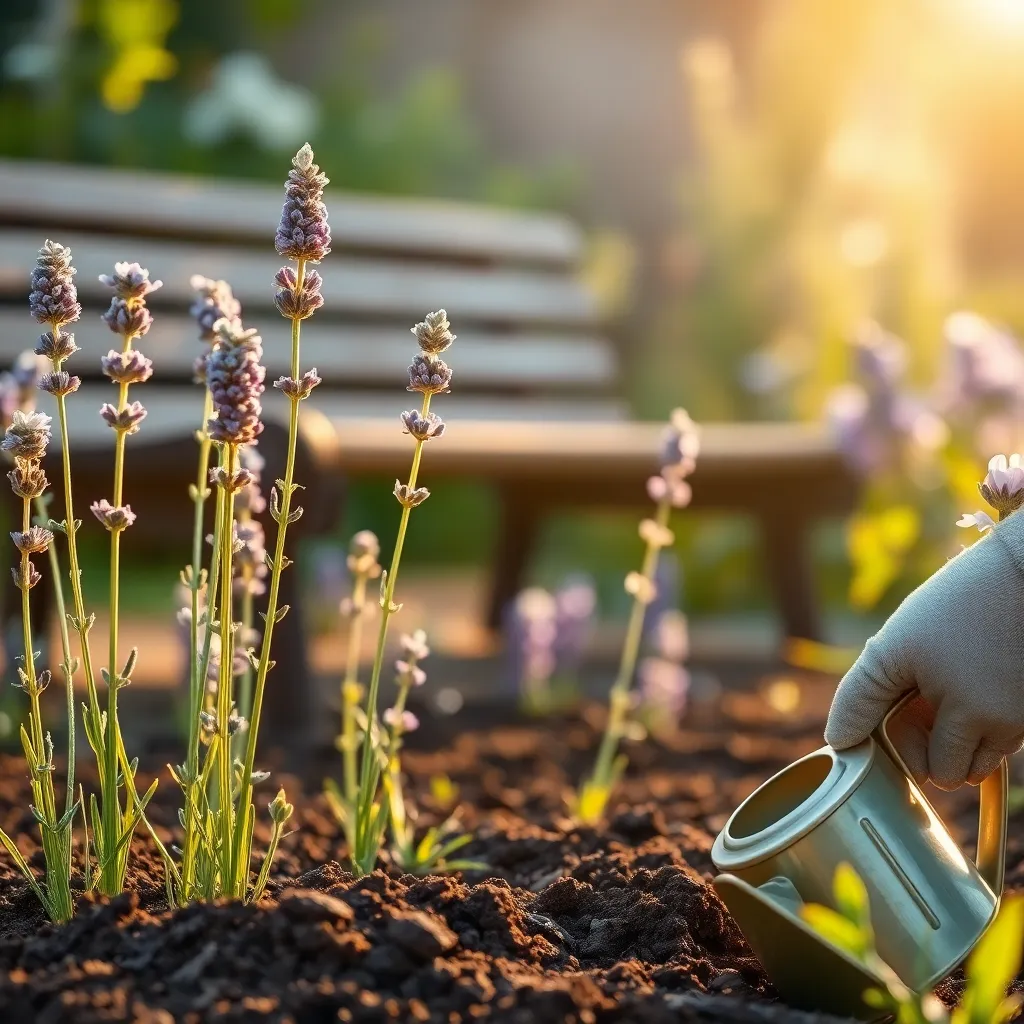
After preparing well-draining soil, it’s time to plant your lavender seedlings. Choose a sunny spot in your garden, as lavender thrives in full sun, requiring at least six to eight hours of sunlight daily.
Spacing is crucial for healthy growth, so plant your lavender seedlings about 12 to 18 inches apart. This allows adequate air circulation, helping to prevent common fungal diseases and ensuring the plants have enough room to grow.
When planting, ensure the crown of the seedling is level with the soil surface. This avoids root rot, a common issue if lavender is planted too deeply.
Water your lavender seedlings immediately after planting to help them establish. However, be cautious with watering frequency; lavender prefers to dry out slightly between waterings, so water only when the top inch of soil feels dry to the touch.
For gardeners in warmer climates, consider adding a layer of light-colored mulch to help retain soil moisture and keep the roots cool. Avoid heavy mulches that might hold too much moisture, as this can lead to root issues.
As your lavender grows, it will need trimming to maintain a tidy shape and promote bushy growth. Aim to prune lightly in early spring, cutting back about one-third of the plant, but avoid cutting into the woody stems, as this can damage the plant.
Water Sparingly but Consistently
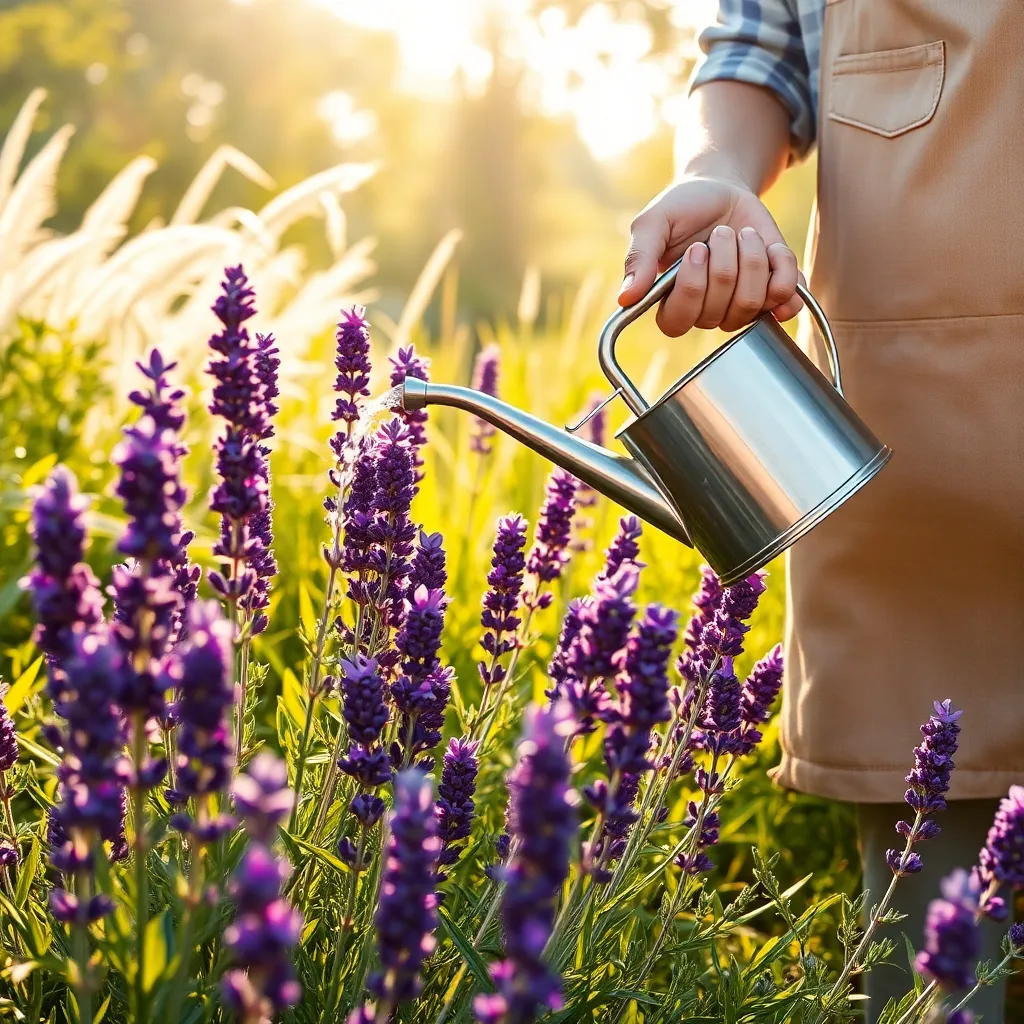
Lavender thrives best when watered sparingly but consistently, making it essential to find the right balance for your garden. Too much water can lead to root rot, while too little can stunt growth and reduce flowering.
Consider watering your lavender once every two weeks, allowing the soil to dry out completely between waterings. During particularly hot or dry periods, you might need to increase the frequency slightly, but always check the soil moisture first by sticking your finger about an inch into the soil.
It’s best to water in the morning to allow any excess moisture to evaporate before evening. This practice helps prevent fungal diseases that can develop in damp, cool night conditions.
For gardeners looking to optimize, installing a drip irrigation system can ensure your lavender receives consistent moisture without overwatering. This method delivers water directly to the roots, minimizing evaporation and keeping foliage dry, which is ideal for lavender’s preferences.
Prune for Healthy Growth
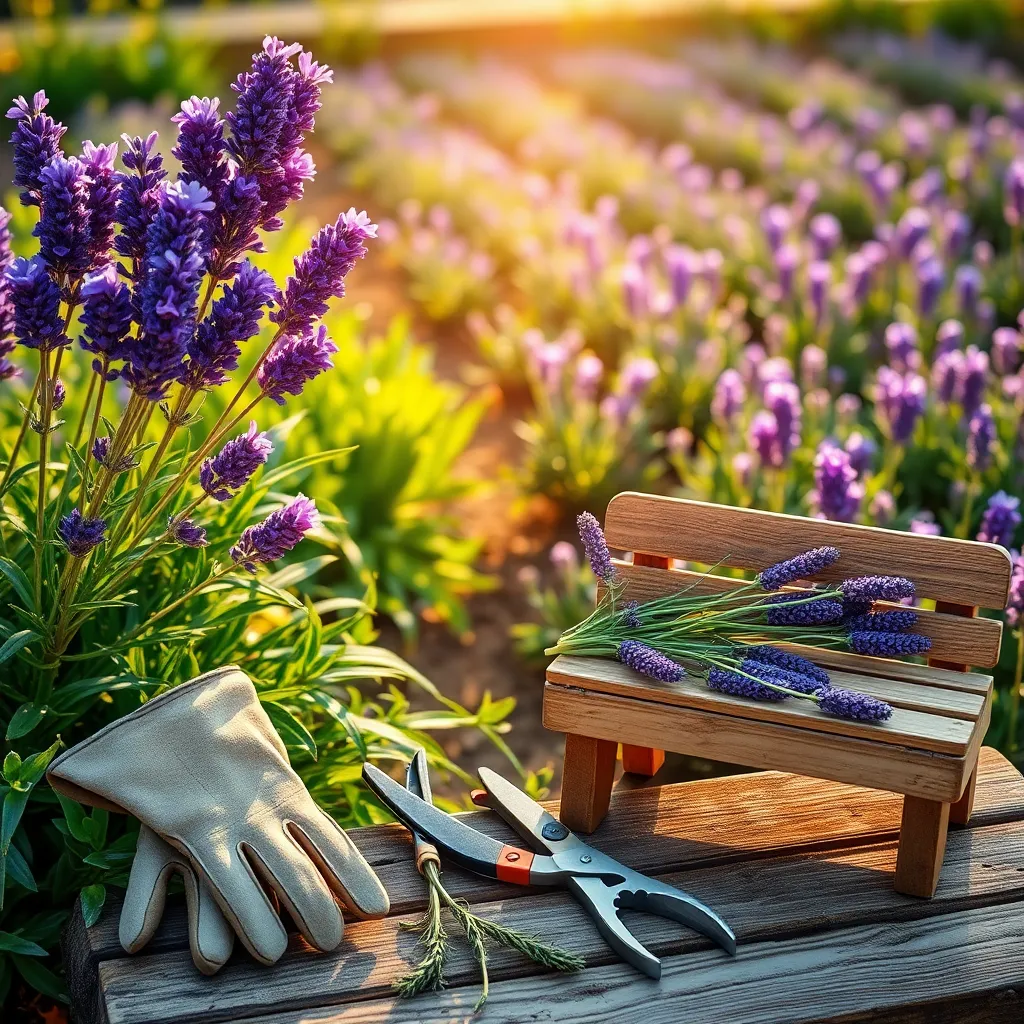
Pruning lavender is essential for maintaining its shape and promoting healthy growth. Begin by trimming your lavender plants in early spring, just as new growth starts to appear.
Using sharp, clean shears, cut back about one-third of the plant’s height, focusing on the older, woody stems. Regular pruning helps prevent the plant from becoming too woody and unproductive.
For optimal results, aim to shape the lavender into a neat mound, which encourages even growth and allows sunlight to penetrate the center. Ensure you avoid cutting into the old wood, as this can inhibit new growth.
Advanced gardeners might experiment with pruning in late summer after the flowering season, which can stimulate a second bloom in warmer climates. Consistent pruning over the years will result in a bushier and more vibrant plant, rewarding your efforts with lush blooms and a delightful fragrance.
Conclusion: Growing Success with These Plants
In nurturing your lavender garden, you’ve learned five essential relationship concepts that can transform your connections. First, like finding the right soil for lavender, relationships thrive when built on a solid foundation of trust and understanding. Second, just as lavender needs sunlight to flourish, relationships require consistent attention and warmth. Third, pruning your plants for better growth parallels the importance of healthy communication and resolving conflicts. Fourth, recognizing when to water and when to let roots breathe mirrors the balance between togetherness and personal space. Lastly, the patience required for lavender to bloom is a reminder that relationships deepen over time with effort and care.
Now, take action by identifying one relationship that could benefit from a little extra attention and apply one of these principles today. Bookmark this article for easy access as you continue your journey toward deeper, more fulfilling connections. Remember, investing in your relationships is the key to blooming success in all areas of life. With each mindful step you take, you’re not just growing lavender; you’re cultivating a garden of thriving relationships that can withstand any season.

